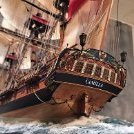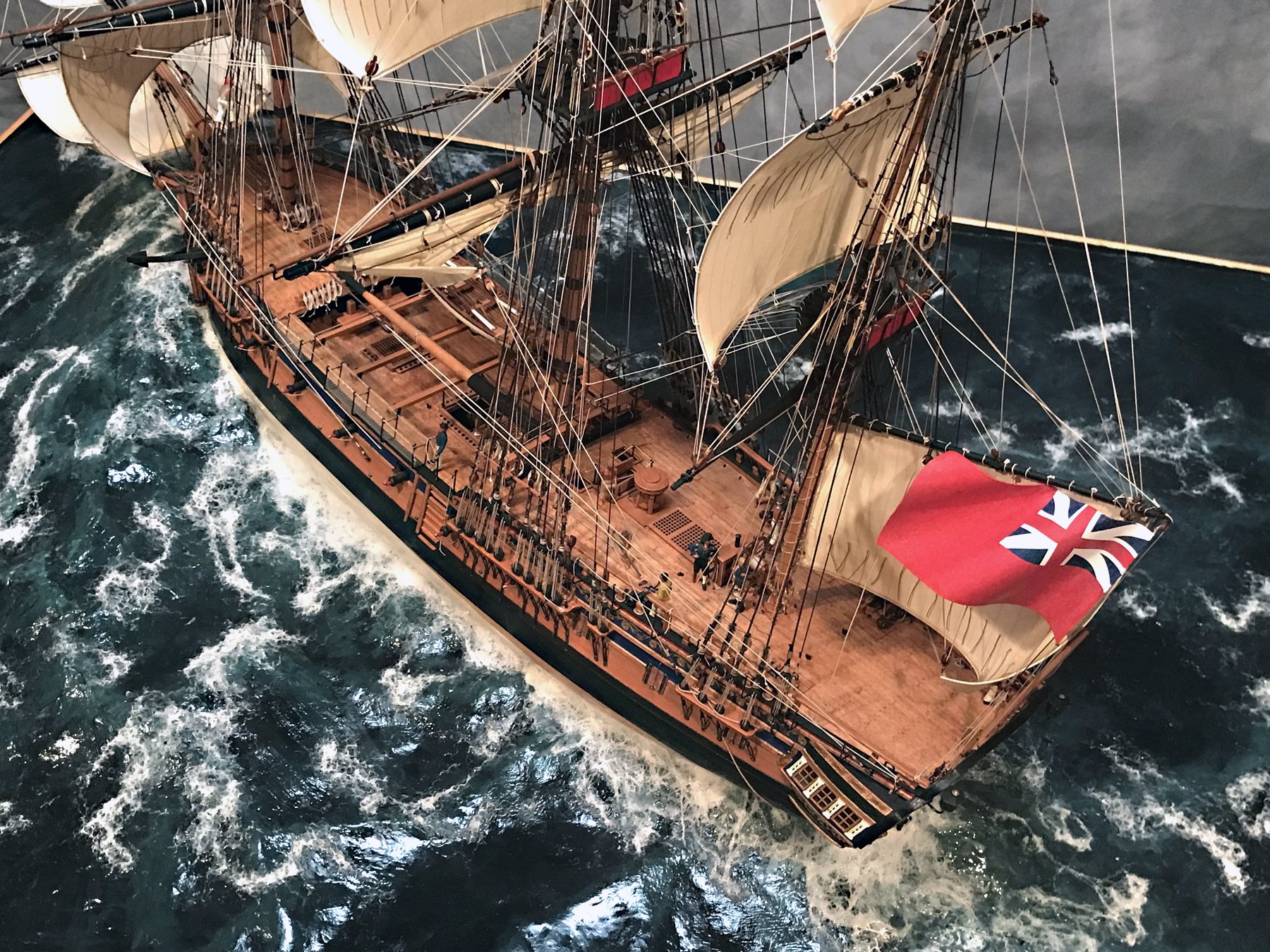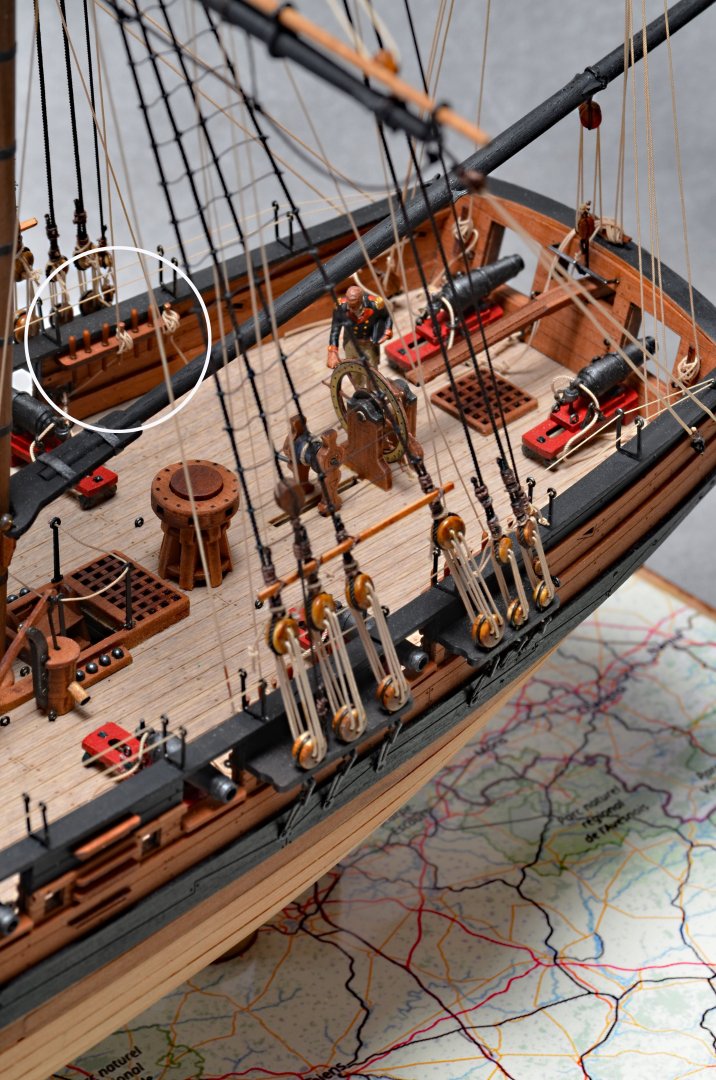-
Posts
1,588 -
Joined
-
Last visited
Content Type
Profiles
Forums
Gallery
Events
Everything posted by hollowneck
-

Cutters, Choppers, Guillotines, Slicers
hollowneck replied to MintGum's topic in Modeling tools and Workshop Equipment
I have used the NWSL Chopper II for more than 10 years and I've only had to replace the insert matts once (you can also reverse them). The razorblade edge does eventually wear a groove that's awkward, but the solution (other than replacing or flipping them over) is to rotate the matt 90 degrees and Voilá! The base is solid, doesn't move around and the footprint on your bench is small. This cutting tool is only appropriate for cutting thin strips. Also, one must tighten the separate angled stop pieces firmly to hold the measured position; the cutting action can slightly shift the wood piece and make repeatable items out of tolerance. You'll also need to change the single edge razorblades often. You'll know when to do this since they will crush the wood and make a raggedy cut when dulled. No biggie: I still have a box of many new razorblades I bought years ago. One caution with this device: after substantial use the cutting arm will loosen and want to "freefall" as you're placing stock up against the fence. Don't ask me how I learned this! -
I have a couple 8 yo grandchildren, boy(s) and girl(s). They like to look at my models but aren't ready to "craft." Two of them like art and draw; either of these two MIGHT be a candidate to entice...later. I'm giving only my direct experience, your mileage may differ! I would suggest 10-12 yo is a better time to introduce model making. My bias is to start with a plastic kit. Close supervision and involvement is obviously mandatory, even at 10. Thus far, I have many "fans and appreciators" but no "takers." The bright ones easily see the complexity and deep commitment of what Grandpa does and understandably show hesitation. I'm O.K. with that: a child's youthful impressions will last and may turn to interest and engagement in future decades...
-
Darn. Ya' snooze, ya' lose.
-

Need small repair done on jibboom of Le Superbe model
hollowneck replied to Mr. Matt's topic in Masting, rigging and sails
Matt, Please check your Private Messages*. If you haven't found a more local source for your model's restoration, I may be able to help. Judging by your photos, it appears a competent repair can be made with only a few hours work but will require an overnight period afterwards to achieve a permanent fix. You'll also likely want to have the affected rigging adjusted once the bowsprit/jibboom is fixed; this is often the case with spar repairs. * upper right corner on the home page ("messages" within the double dialogue bubbles) -
Ditto. All positive news, Chris. Your investment in the pro 3D printers will pay off. I believe there is an eager person in your vicinity that you can hire and train to help with your growing production needs. The expanding facilities and gear is one thing, a dedicated production person to keep the business humming along is another - as you well know. So, before-the-fact: Congratulations! I can't wait to open my Jack Aubrey Surprise box next year...even with the 10% import tax (called a "tariff).
-
Your creativity is a great testament to the fun that can be had in our unique hobby: yet another brilliant idea and execution, Glen. Bravo - You got the SIB "Rizz!"
- 156 replies
-
- Queen Annes Revenge
- bottle
-
(and 1 more)
Tagged with:
-
For accurately-scaled belaying pins I can recommend the new 3D printed ones at Syren Ship Models. Chuck offers a couple sizes, the smallest (7mm) are perfect for 1:64. The pin's color is printed into the resin, no painting necessary. They will also take rope tension when belaying lines and not break. Attached pic is for my Vanguard gun brig "HM Cracker"
-
Nyet! Falkonet is a Russian kit brand. Crafty Sailor (Canada) imported their stuff for a couple years along with Master Korabel (also Russian). Enter the invasion of Ukraine and... sanctions...Falkonet's aftermarket wood, perfectly-scaled belaying pins are excellent. The company still has a website: good luck ordering (and getting) merch from Russia (which is too bad).
-
Glenn: https://www.agesofsail.com/shop-cat/vanguard-models-ship-model-kits/ Their indicated prices may be before the tariff debaucle and appear to be adjusted for the £ to USD premium. Hopefully, AOS have inventory pre-craziness so you don't have to navigate the U.S. Customs/tariff shipping nightmare.
-
Aha! time traveller Bob must have a Sassanach and a Bairn waiting at home, whatever the century. Congratulations Maurice, you've done your typical amazing work with Harpy. Another aspirational, top-drawer Build Log.
- 332 replies
-
- Harpy
- Vanguard Models
-
(and 1 more)
Tagged with:
About us
Modelshipworld - Advancing Ship Modeling through Research
SSL Secured
Your security is important for us so this Website is SSL-Secured
NRG Mailing Address
Nautical Research Guild
237 South Lincoln Street
Westmont IL, 60559-1917
Model Ship World ® and the MSW logo are Registered Trademarks, and belong to the Nautical Research Guild (United States Patent and Trademark Office: No. 6,929,264 & No. 6,929,274, registered Dec. 20, 2022)
Helpful Links
About the NRG
If you enjoy building ship models that are historically accurate as well as beautiful, then The Nautical Research Guild (NRG) is just right for you.
The Guild is a non-profit educational organization whose mission is to “Advance Ship Modeling Through Research”. We provide support to our members in their efforts to raise the quality of their model ships.
The Nautical Research Guild has published our world-renowned quarterly magazine, The Nautical Research Journal, since 1955. The pages of the Journal are full of articles by accomplished ship modelers who show you how they create those exquisite details on their models, and by maritime historians who show you the correct details to build. The Journal is available in both print and digital editions. Go to the NRG web site (www.thenrg.org) to download a complimentary digital copy of the Journal. The NRG also publishes plan sets, books and compilations of back issues of the Journal and the former Ships in Scale and Model Ship Builder magazines.







